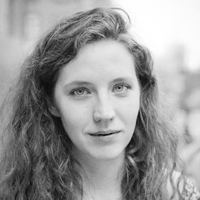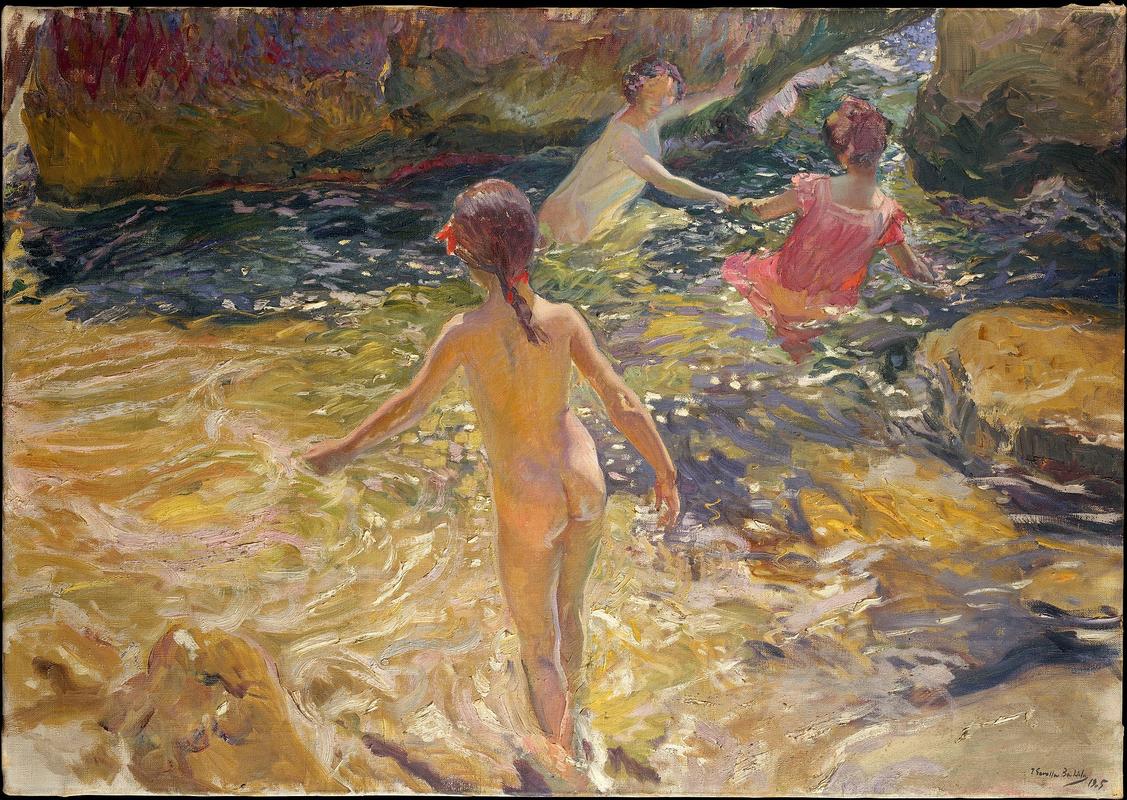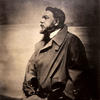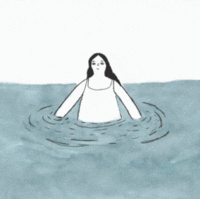More about The Bath, Jávea

Contributor
It seems like most of the Impressionists were fond of seaside vacations.
Just saying, there are a lot of windswept bluffs and overdressed beachcombers in that genre. (Like, sure guys, I’m sure you were “working really hard” painting at the beach all summer.) Joaquin Sorolla y Bastida was a proper beach bum, but clearly had a work ethic. He did soooo many paintings of bathers on the shores near his birthplace of Valencia, Spain, including the coastal town of Jávea.
Children appear often in his work. When they’re swimming, they’re usually naked. Apparently this was pretty common for little European kids around the turn of the century-- and the theme of nude children in art was weirdly popular. Artists like Mariano Fortunay, Ignacio Pinazo, and John Singer Sargent were all known to celebrate the naked whimsies of youth in their work. These are all artists who Sorolla admired, and the subject matter spilled over.
Sorolla was orphaned at the age of two. To psychoanalyze, that could be the root of his penchant for painting children and their caregivers. He had three kiddos of his own, who often appeared in his work. His portrayal of children wasn’t just personally nostalgic, though. These sun-soaked cherubs held a social significance for the future of Spain. The Spanish-American War had happened in 1898, and Spain had lost a lot (namely Cuba, Guam, Puerto Rico and the Philippines. That’s a fail). For some, these hopeful, youthful paintings suggested a national rebirth during a time when Spain was turning away from colonialism, and beginning to looking inward toward its own culture and infrastructure.
Sources
- “Boys on the Beach.” Museo del Prado. Accessed August 29, 2017. https://www.museodelprado.es/en/the-collection/art-work/boys-on-the-bea…
- “The Bath, Jávea.” The Met. Accessed August 29, 2017. http://www.metmuseum.org/art/collection/search/437704
- “Joaquín Sorolla, SPANISH, NIÑOS EN LA PLAYA, VALENCIA (CHILDREN ON THE BEACH, VALENCIA).” Sotheby’s. Accessed August 29, 2017. http://www.sothebys.com/en/auctions/ecatalogue/2013/european-paintings-…
- “Spanish American War.” History. Accessed August 30, 2017. http://www.history.com/topics/spanish-american-war












